In recent years, there needs no introduction to what is Rattan furniture. It is gaining immense popularity in modern Indian homes, as it exudes a timeless charm and adds a warm, natural touch to any space. With its versatile nature, durability, and eco-friendly credentials, rattan has become a go-to choice for architects, interior designers, and home improvement enthusiasts alike. In this comprehensive guide, we will explore everything you need to know—what is rattan, its origin story, what is its use, how can it be maintained, and more.
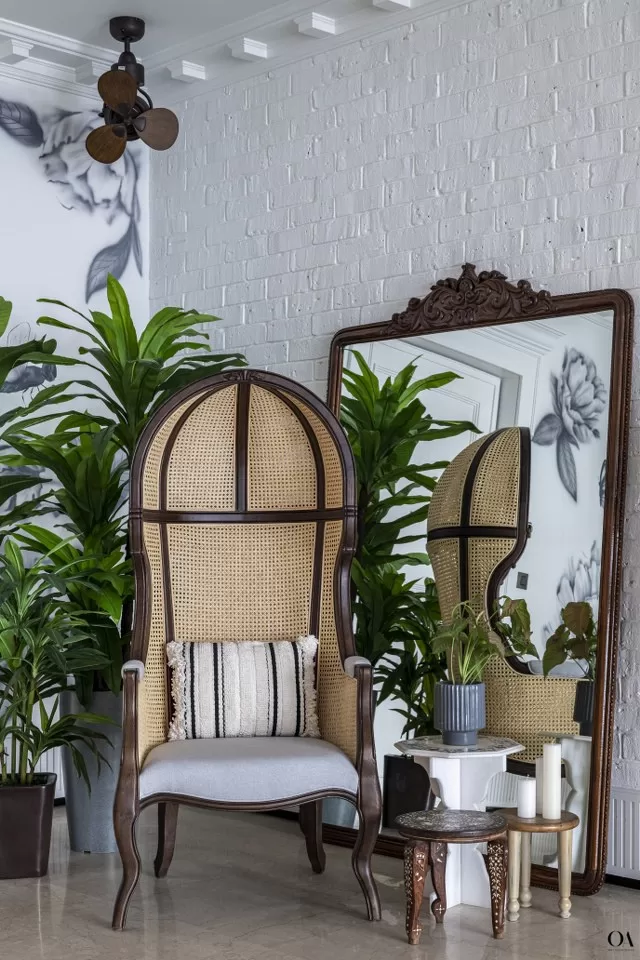
What is Rattan?
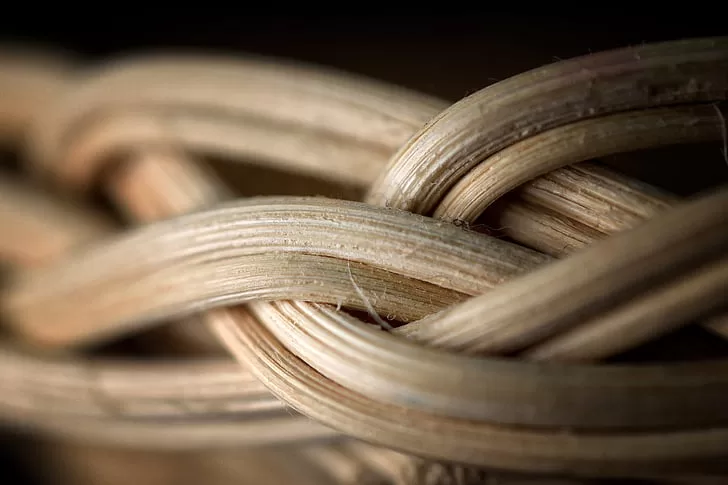
Rattan is a type of long, slender climbing palm belonging to the subfamily Calamoideae and is renowned for its flexible and robust stems, commonly known as canes. These canes, comprised of a dense network of fibres and lignin, contribute to the unique blend of flexibility and strength that renders rattan an exceptional material for various applications, including furniture, baskets, and other decorative items. It is native to the tropical regions of Africa, Asia, and Australasia. The rattan plant boasts a rapid growth rate, making it a sustainable and renewable resource.
What is Rattan’s origin story?
The historical application of rattan can be traced back to ancient times, with archaeological evidence substantiating its prevalence in the creation of furniture and handicrafts across diverse cultures. Its use in furniture dates back to ancient Egypt, where intricate pieces were discovered in the tombs of pharaohs. Throughout history, rattan furniture has also been found in the ruins of Roman villas, giving testament to its enduring appeal. In modern times, Southeast Asian countries like Indonesia, Malaysia, and the Philippines have been at the forefront of rattan production.
Its popularity as a significant crafting material finds deep roots in Southeast Asia, where indigenous communities in countries such as Indonesia, Malaysia, and the Philippines honed the art of rattan furniture production. These skilled artisans capitalised on the plant’s natural attributes, utilising its pliability and durability to create intricate and aesthetically pleasing pieces.
How did Rattan become popular in Interior Design?
Rattan’s journey through the annals of interior design is a fascinating exploration of evolving trends:
Colonial Influence: The colonial era witnessed the introduction of rattan furniture to Europe by British, Dutch, and French colonisers, imprinting its influence on European interior design trends.
Mid-Century Modern Era: Rattan experienced a resurgence during the mid-20th century, becoming synonymous with the mid-century modern design movement. Iconic pieces such as chairs and sunburst mirrors became emblematic of style and sophistication.
Bohemian and Coastal Styles: Its natural and organic aesthetic seamlessly integrates with bohemian and coastal interior design, contributing to its enduring popularity in these styles.
Fun Facts in Points
1. Centuries-Old Usage: Rattan’s utilisation spans centuries, with a rich historical tapestry woven into various cultures attesting to its enduring appeal.
2. Biochemical Composition: Rattan’s canes consist of cellulose fibres embedded in a matrix of lignin, offering a unique combination of tensile strength and flexibility.
3. Geographical Distribution: Indigenous to tropical regions, rattan’s prevalence extends across Africa, Asia, and Australasia, manifesting its adaptability to diverse climates.
4. Cultivation and Harvesting: Cultivation involves meticulous attention to environmental conditions, and harvesting, done once the cane reaches maturity, is a delicate process to ensure optimal quality.
Where can Rattan be used?
Rattan’s versatility finds its application in a wide range of furniture and decorative items. Let’s delve into some of its primary uses:
1. Chairs and Sofas
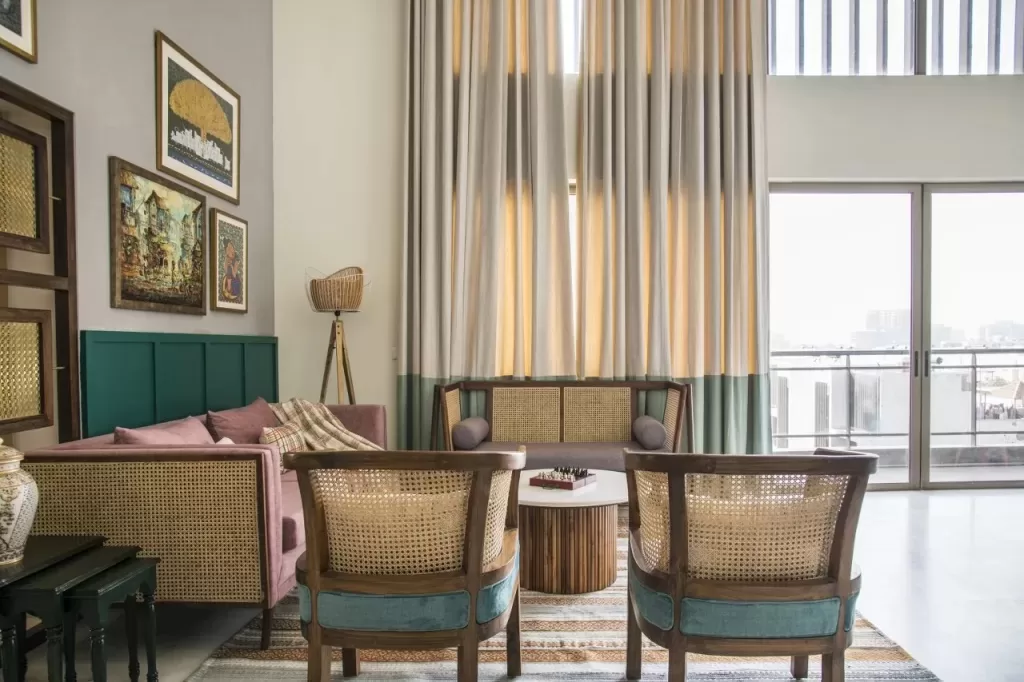
The furniture industry is the primary beneficiary of rattan’s characteristics, with chairs, tables, and sofas showcasing its inherent aesthetic appeal and structural integrity. These are iconic pieces of furniture that bring a touch of elegance and relaxation to any space. Whether placed in a living room, patio, or garden, rattan seating options provide a comfortable and inviting ambience.
2. Tables and Sideboards
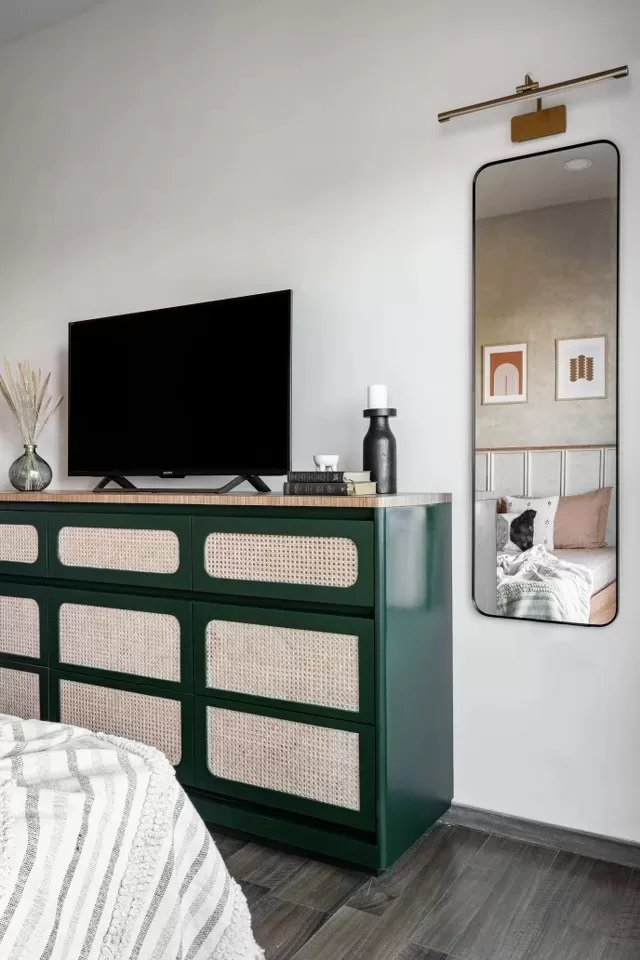
Rattan tables and sideboards can serve as beautiful focal points in dining rooms, kitchens, or even outdoor spaces. The intricate detailing and natural finish of rattan add a unique charm to these furniture pieces, elevating the overall aesthetic of the room.
3. Decorative Accessories
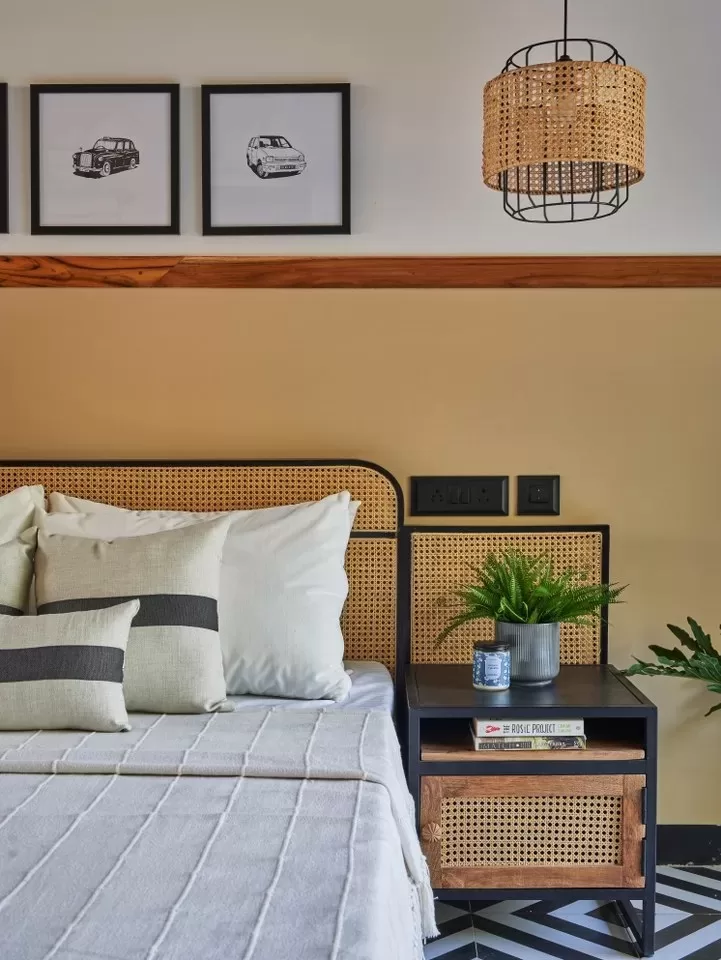
Rattan serves as a medium for the creation of intricately woven baskets, lampshades, and diverse decorative items, exemplifying its adaptability to diverse forms. These charming accents infuse a rustic vibe into any setting while providing functional storage solutions.
4. Garden and Outdoor Furniture
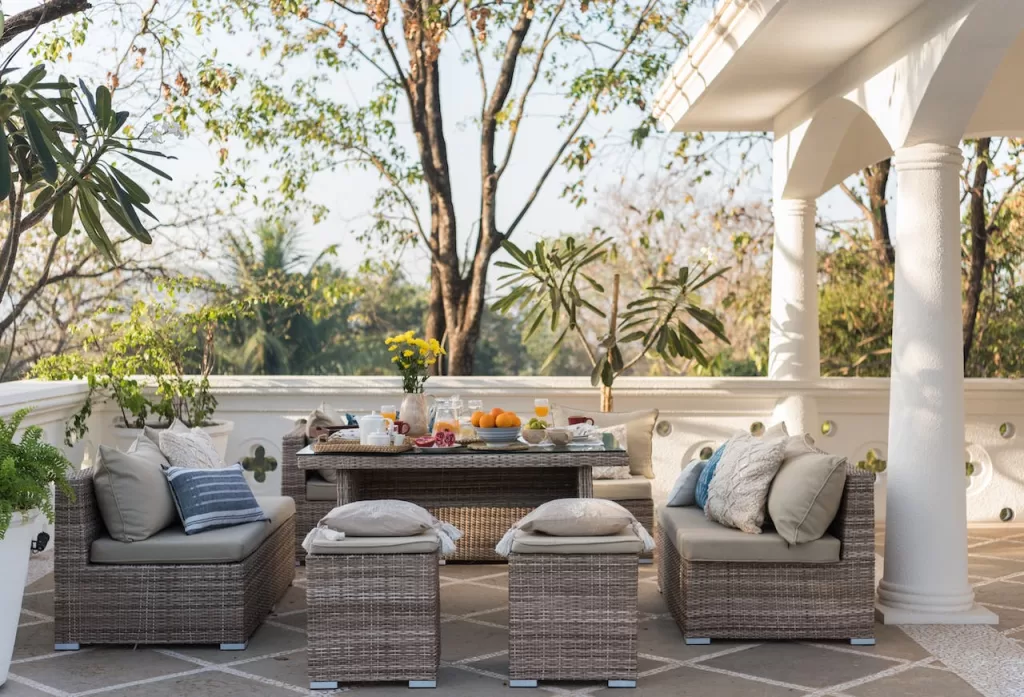
Its resilience to environmental factors makes rattan an optimal choice for outdoor furniture, successfully marrying style with durability. Despite its many virtues, it’s important to note that rattan is not waterproof. Unlike synthetic materials designed for outdoor use, it is susceptible to moisture, which can have adverse effects on its structure and aesthetics.
Why is Rattan So Popular?
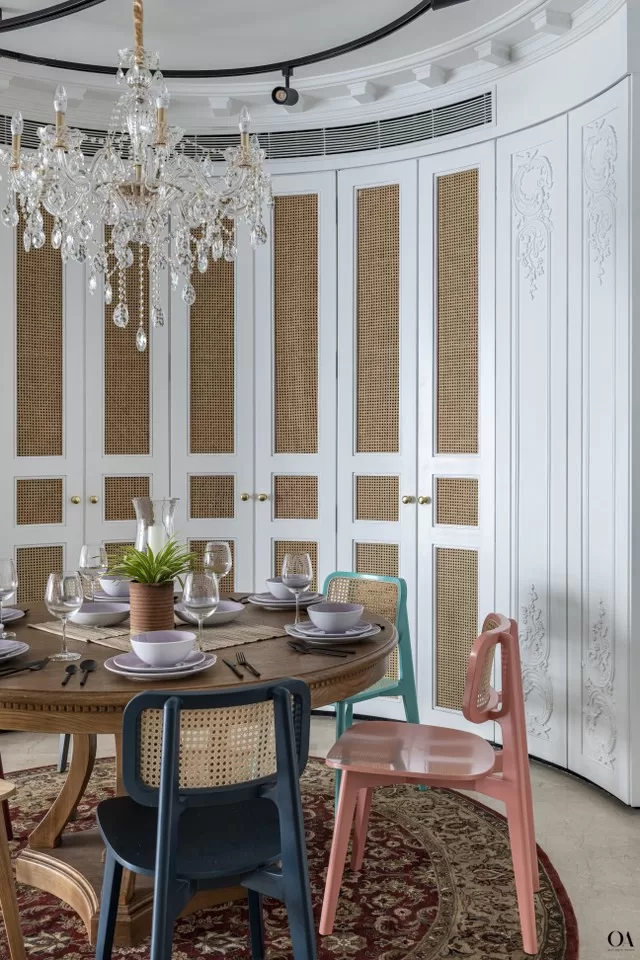
Rattan furniture offers a plethora of advantages that make it a highly sought-after choice for interior design projects. Let’s explore some of its key benefits:
1. Durability and Strength
Rattan furniture is known for its exceptional durability and strength. Its strands are tightly woven, providing a sturdy framework that withstands daily wear and tear. This makes rattan furniture suitable for both indoor and outdoor settings, ensuring its longevity.
2. Lightweight and Easy to Move
One of the standout features of rattan furniture is its lightweight nature. Unlike heavy wooden or metal furniture, these pieces can be easily moved around to different areas of your home. This makes rearranging your living space a breeze.
3. Naturaland Eco-Friendly
For those conscious of their environmental impact, rattan furniture is an ideal choice. Its plant is a sustainable resource that grows rapidly and abundantly. Harvesting rattan stems does not harm the plant, allowing it to regenerate quickly. Opting for this material in your interior design promotes eco-consciousness and sustainability.
4. Versatile Aesthetic
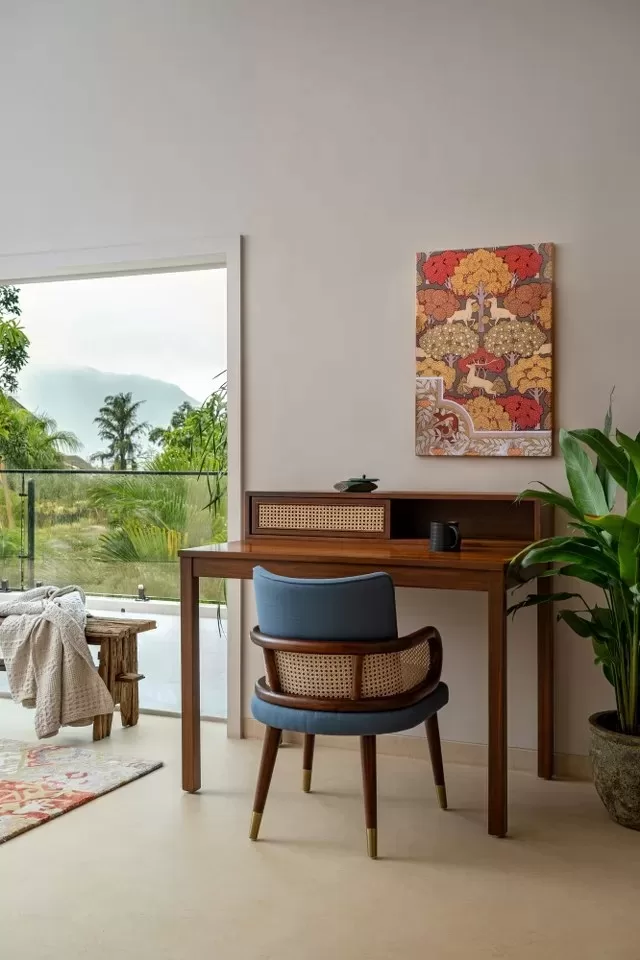
Rattan furniture effortlessly blends with various styles, from modern minimalism to rustic bohemian. Its natural tones and textures complement any colour scheme or decor, offering a versatile aesthetic that can easily adapt to evolving interior design trends. Additionally, artisans also appreciate this material for its ability to be shaped into intricate designs, providing a vast array of options for furniture styles.
5. Comfortable and Ergonomic
Rattan furniture often incorporates cushions and upholstery, ensuring optimal comfort and support. Its smooth and rounded edges and frames offer excellent ergonomic qualities, making it a comfortable seating option for long hours of use.
6. Low Maintenance
Rattan furniture’s relative ease of maintenance, requiring periodic cleaning and occasional polishing, adds to its appeal to consumers.
Is Rattan furniture expensive?
Price considerations are an important factor to consider when purchasing rattan furniture. The pricing may vary depending on factors such as the quality, design, and craftsmanship of the piece. However, rattan’s durability and timeless appeal make it a worthwhile investment for those who appreciate quality furniture.
The pricing dynamics of rattan furniture are multifaceted:
1. Quality Gradients: They are of higher quality, characterised by smoother finishes and uniform colouring, commands a premium in the market.
2. Design Complexity: Elaborate designs and intricate weaving patterns contribute to the overall cost, reflecting the craftsmanship and skill involved.
3. Brand Reputation: Established brands, often associated with quality assurance and expertise, may influence pricing due to the perceived value attached to their products.
How to take care of Rattan Furniture?
Proper maintenance is crucial for preserving the beauty and longevity of rattan furniture. Follow these guidelines to keep your rattan pieces in top condition:
1. Avoid Direct Sunlight
While rattan is highly durable, prolonged exposure to direct sunlight can cause it to fade or become brittle. To protect your furniture, place it away from direct sunlight or use curtains and blinds to shield it.
2. Regular Cleaning
Dust and dirt can accumulate on rattan surfaces over time. Clean your furniture regularly using a soft brush or vacuum cleaner with a brush attachment to remove any debris. Wipe it down with a damp cloth and mild soap solution, taking care not to oversaturate it.
3. Avoid Excessive Moisture
Though rattan can withstand occasional moisture, it is best to keep it away from excessive humidity and wet conditions. Moisture can cause it to warp or mold. If your furniture gets wet, wipe it dry immediately.
4. Protecting Outdoor Rattan Furniture
If you have rattan furniture outdoors, it is important to cover it or move it indoors during harsh weather conditions. Exposure to rain, snow, or extreme temperatures can damage the furniture and reduce its lifespan.
5. Using Cushions and Covers
To enhance comfort and protect the rattan frames, use cushions and covers. These accessories not only add a touch of style but also shield the furniture from stains, spills, and direct contact.
6. Periodic Polishing
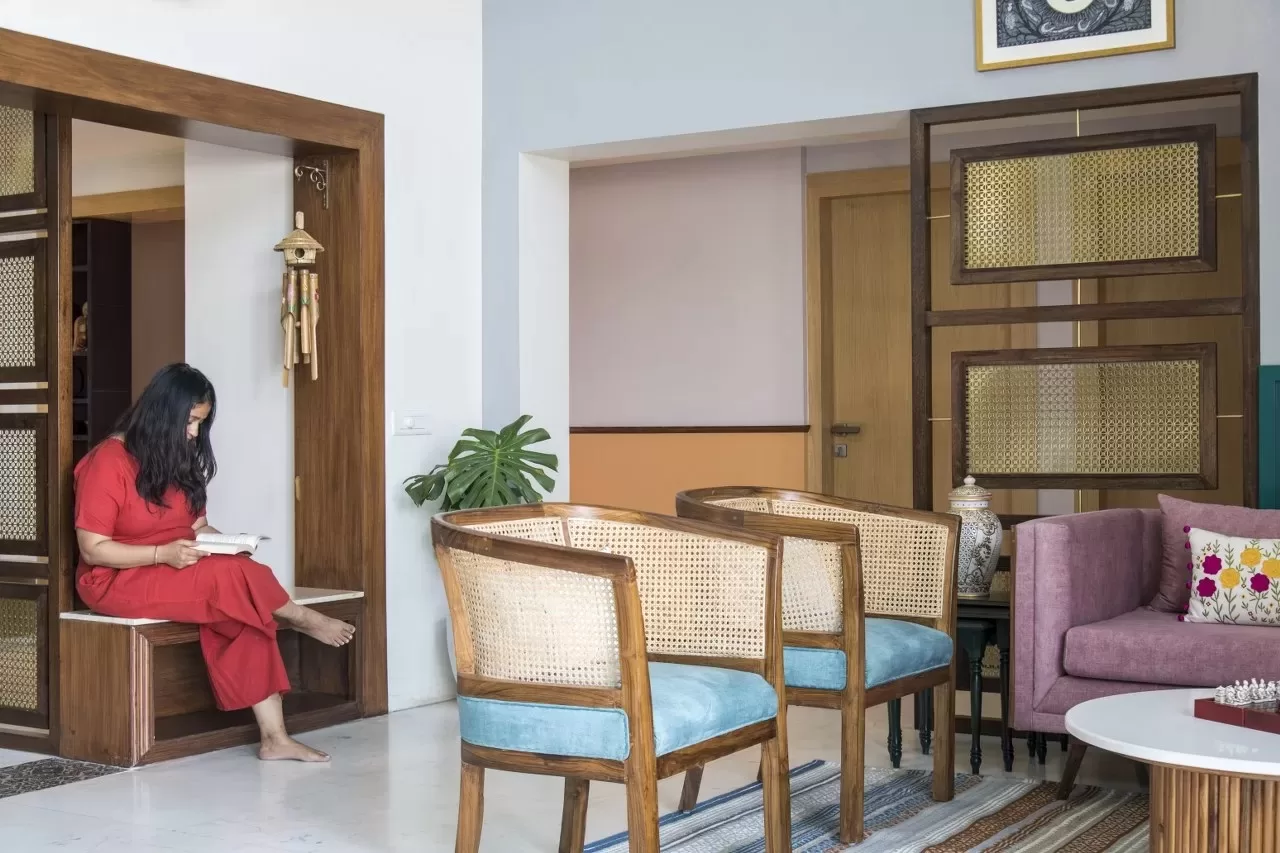
To maintain the shine and overall look of your rattan furniture, it’s recommended to periodically apply a thin coat of furniture wax or linseed oil. When applying the wax or oil, be sure to use a soft cloth and work it in evenly, making sure to cover all surfaces of the furniture. This process should be repeated as needed, depending on the amount of use your furniture gets.
What is the Difference Between Rattan, Wicker, and Cane?
While the terms rattan, wicker, and cane are often used interchangeably, they represent distinct elements in the realm of furniture and handicrafts:
Rattan: The overarching term referring to the entire climbing plant and its stems, used as a material for various applications.
Wicker: Describes a weaving technique rather than a specific material; wicker furniture can be crafted using a variety of materials, including rattan.
Cane: Specifically denotes the peeled outer bark or skin of the rattan plant, commonly employed in weaving chair seats and backs.
Understanding these nuances is crucial when navigating the market for furniture and decor.
Future of Rattan in India
Sustainability Trend: The prevailing global emphasis on sustainable living aligns with its eco-friendly nature, making it an attractive choice for environmentally conscious consumers.
Artisanal Craftsmanship: Rattan’s versatility provides a canvas for skilled artisans to showcase their talents, creating bespoke and handcrafted pieces that resonate with a market appreciative of artisanal craftsmanship.
Outdoor Living Spaces: The escalating trend of designing comfortable and aesthetically pleasing outdoor living spaces positions rattan as an ideal choice for outdoor furniture, leveraging its weather-resistant properties.
Conclusion
In conclusion, the appeal of rattan extends beyond its historical significance and technical intricacies. Moreover, its adaptability to evolving design trends positions it as a dynamic element in interior design. Functioning as both a versatile and sustainable material, rattan has seamlessly navigated through various design movements, leaving an indelible mark on interior design. As we reflected on what is rattan and its characteristics, we unravelled a story woven through centuries, shaping and reshaping interior aesthetics.
The durability, natural beauty, and eco-friendly characteristics of rattan collectively make it an excellent long-term investment for any space. Whether one leans towards the rustic charm of rattan chairs and tables or the cosy appeal of rattan accessories, incorporating Rattan into your interior design will undoubtedly elevate your home.
Looking forward, what is Rattan’s future trajectory? The future of rattan is promising, fueled by the intersection of sustainability trends, artisanal craftsmanship, and the quest for unique design solutions. So go ahead, embrace the timeless allure of rattan, and infuse your living space with its unique warmth and character, for in the end, what is rattan if not an invitation to elevate your home into a haven of enduring style?
Content Writing And Research By: Ar. Kiran Rathi
The post What is Rattan: An Essential Guide appeared first on The Architects Diary.
Leave a Reply